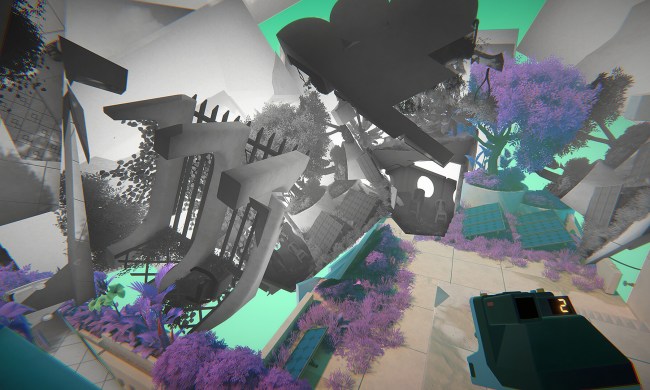The measure of a great roguelike is in how much you can absolutely break it. Some of my favorite games in the genre allow me to piece together wildly overpowered builds capable of squashing fierce bosses in a few fell swoops. Based on my first hands-on demo with Inkbound, the upcoming game from Monster Train developer Shiny Shoe, I wager the monsters of its storybook world will fear me as an unstoppable force of nature when the indie title enters early access.
I sat down with the developers behind the game to play a full run of its core roguelike mode. By the end of that hour session, my co-op partner and I had put together satisfyingly overpowered builds that allowed us to steamroll through battles unharmed. That’s a positive sign for an intriguing roguelite that emphasizes strong ability synergy and teamwork.
Oops, all crits
In Inkbound, you play as a featureless character who rises out of an inky ocean. After a bit of customization, you’re tossed into a hub world from which you can pop into a traditional roguelite run. The basic framework of a run isn’t too different from other games of the genre. You’ll battle enemies, gain upgrades, encounter special events, and more en route to a few sub-bosses and one final big bad.
Its most unique feature, though, is in its combat, which draws inspiration from Diablo and DOTA. Set up in turn-based fashion, players get a few points they can spend on each turn. Those can be used to move or use abilities, which have their own mana cost. Like Mario + Rabbids: Sparks of Hope, you can freely move at any time allowing you to make flexible decisions each turn. Attacks are handled in MOBA fashion, with players picking their attack from a bar on the bottom screen and clicking to indicate where they want to attack.
I was instantly able to pick up that core loop. In an early battle, I carefully weakened a powerful enemy with some slashes before using movement to move behind three enemies that were lined up and kill them all with one shot. That made for a fun enough chess game that requires some smart order-of-operations play, but the action really got cooking as I began to upgrade my attacks.

Inkbound gives players several ways to power themselves up. For one, basic attacks can be evolved to give them a few extra perks and utility. One attack lets me dash into an enemy and mark it, letting me inflict more damage on the next turn. I eventually upgraded that to have it inflict poison too and later increased how many stacks of it I could add. A basic slash attack became much deadlier midway through the run as I unlocked a perk that would let it bounce between enemies. There’s a strong sense of growth throughout the course of a run, which keeps each encounter feeling just new enough.
Though I love those attack upgrades, it’s the game’s passive buffs that turned me into a monster. Players can hold a select number of relics, which grant standard boosts to health and damage. I eventually decided to work my way into a critical hit-focused build, upgrading both my chance of landing one and how much damage it would deal. That quickly began to snowball. Soon, I was stacking enough to give me a nearly 70% chance of landing a critical blow for massive damage. Another ability would ensure that my first attack in a battle was always a crit. Every upgrade I chose began to synergize, maximizing the physical attack build I was crafting.

Before my co-op partner and I knew it, we’d waltzed into the final boss arena like demigods. Our final challenge was a massive bird with wings cloaked in foliage, capable of flying to the edge of the arena between turns and sending in smaller enemies that we’d have to deal with. I immediately slashed at it with a critical strike and then slid into it to both mark and poison it. With more mana to spend, I could follow up with one of my higher-cost attacks, dealing a massive chunk of damage. By the end of that turn, we had already blown through the first phase of the battle. I had to wonder if the developers were taking worried notes off-camera.
I’m left feeling optimistic about Inbound, even if I assume some balancing is coming before it launches. Despite being an entirely different game than Monster Train, I can feel that deckbuilding DNA here. It’s all about putting together a character build where each ability synergizes with another. Pick your upgrades right and you’ll make each mana point you spend count — much to the dismay of your enemies.
Inkbound is in development on PC with an early access launch planned.



